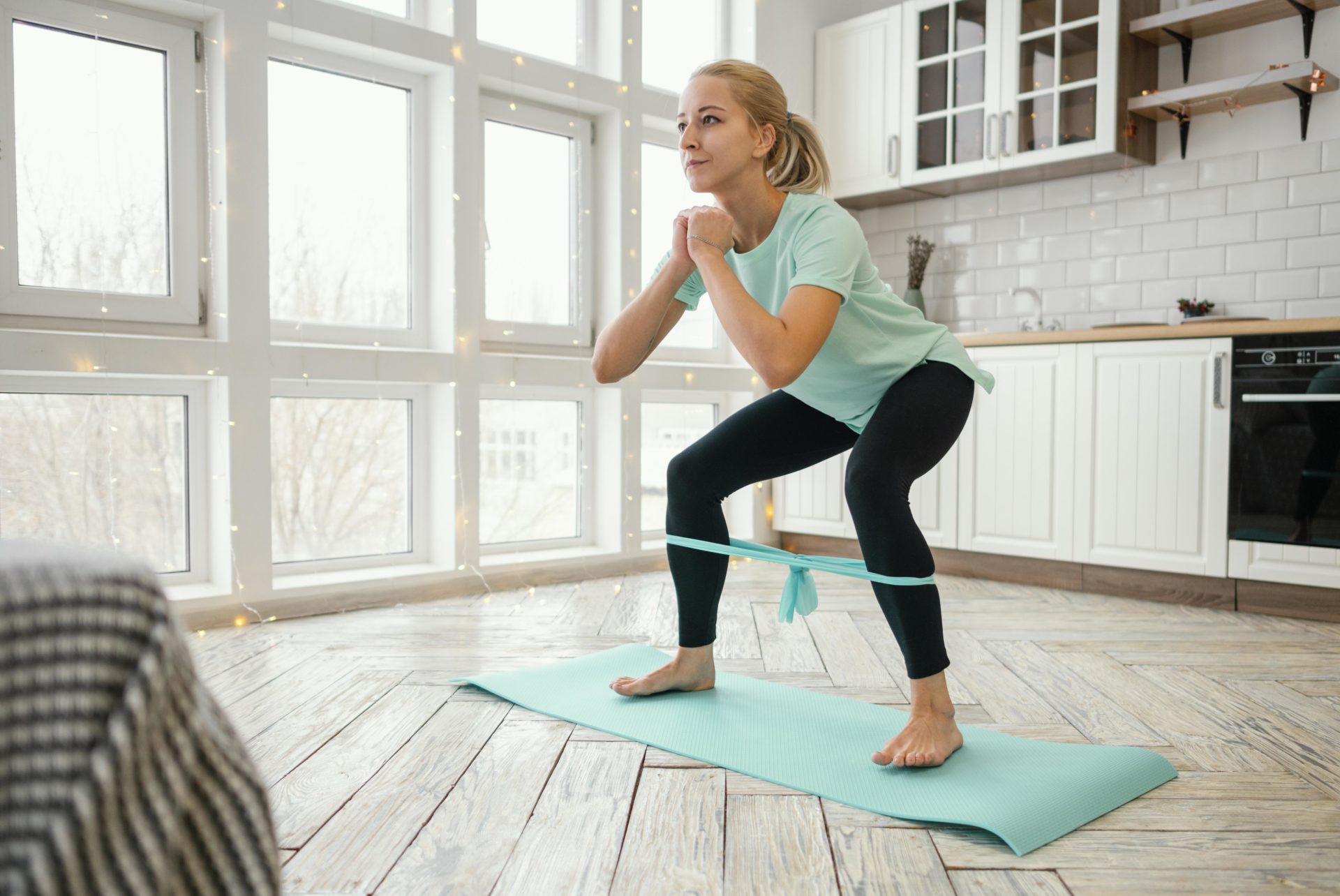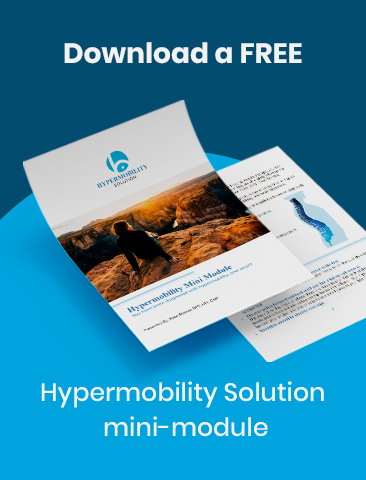Read this article to learn 8 hypermobility basics to live a pain-free life. We’ll discuss:
- How to know if you have hypermobility.
- The relationship between hypermobility and fatigue.
- Basic exercises for hypermobility.
- Hypermobility and skin signs.
- All about joint popping.
- How to manage pain.
- Common hypermobility misconceptions.
- The best way to stop using your extra range.
How to know if you have hypermobility
The first of these hypermobility basics is to understand is how to identify if you have Hypermobility. There are many ways to know, including seeing a professional.
For general screening, you can ask yourself the following questions.
- Can you bend your little finger backward beyond 90 degrees?
- Can your thumb reach your forearm?
- Straighten your arm. Does your elbow hyperextend 10 degrees or more?
- Straighten your leg. Do your knees bend backward?
- Reach forward and touch the floor. Can you place your hands flat on the floor without bending your knees?
If most of the answers to these questions are “yes,” it would be good to get a professional to examine you.
Book an appointment at the Great Divide clinic.

The relationship between hypermobility and fatigue
Hypermobility is much more than just joint pain. Like any other chronic condition, it can be tiring to live with it, bringing a lot of fatigue.
Often, there is a quantity issue related to the number of things you need to do in your daily life. I like to explain pain and fatigue with the bucket analogy.
Your bucket can be filled with physical activity, financial stress, emotional stress, allergies, illness, temperature, and more. How big this bucket is, depends on your overall health.
Each bucket is different, and it is essential to understand that when your bucket starts to overflow, it doesn’t matter what made it overflow. It can be a walk or even a tough conversation.
We tend to figure out what happened that made our bucket overflow; however, it doesn’t take a lot to start bubbling over when it is already full.
The idea is to work on emptying that bucket – maybe with meditation, mindfulness, or even a hot bath.
Physical activity can help increase the size of the bucket, but if you are already on edge, you have to be careful about quantity.
Thus, one day you can do a 30-minute walk and feel great, and the next day a 10-minute walk and feel bad.
Basic exercises for hypermobility
The third of these hypermobility basics is learning to incorporate daily exercises for Hypermobility. These should be daily exercises in a controlled way that covers several essential muscle groups.
While you can do more, start with reasonable control of these muscles. These exercises require minimal equipment and allow you to focus on finding the right muscles and getting them working.

Hypermobility and skin signs
Skin signs are one of the most common clues about the possible presence of Hypermobility. They usually come as easy bruising, scarring problems, skin hyperlaxity, and many stretchmarks, even at a very early age.
These skin issues are caused because the structural proteins such as collagen, fibrillin, and fibronectin are not as tightly knit together as usual. They are also genetically determined, which is why they don’t react to collagen injections or other medical interventions.
It is imperative to have general skincare, such as avoiding trauma and allowing wounds to heal.
All about joint popping
Is it wrong to pop your joints? The short answer is yes.
The long answer is that it feels better to pop your joints because of a bit of endorphin release. It gives you more movement in that place and alleviates the pain.
However, this only happens for 20 minutes, and then you must do it repeatedly. Popping causes joint Hypermobility, which makes the condition worse.
With self-manipulation, you cannot control where that movement is going and will go to the weakest link, which you shouldn’t be moving. For manipulation, it is better to see a chiropractor or a PT.
It also becomes a habit, and you end up popping things without noticing. Try to cut back on self-manipulation by 50% and eliminate the absent-minded ones.
Try to reach a point where you do it when you need to.
How to manage pain
Sadly, hypermobility sometimes comes with a lot of pain, but there are ways to handle it and improve it.
I first tell my patients to stop doing what’s not helping. Stop popping your joints & overstretching. Instead, lie down and get the weight off the joint. Heat can help and also support the joint.
You can also use topicals such as Biofreeze and Arnica.
Common hypermobility misconceptions
Hypermobility is not rare. However, many people (including doctors) are still not well-versed in this chronic condition. I’ve had my share of encounters with people who know what Hypermobility is.
Hypermobility is not just “being flexible.” It is a complex condition with various comorbidities which can affect someone’s quality of life.
These are the most common ones to look out for and explain to those who don’t understand them:
Myth #1
Myth #2
Myth #3
Myth #4
The best way to stop using your extra range
The final of these hypermobility basics is learning how to control your extra range. Your extra range is that additional extension your joints can do. This hyperextension may be fun at parties. However, it is not fun when you get home and the flare-up starts.
It is vital to learn how to stop using your extra range.
Check out this video on how to.
If you are looking for Hypermobility resources, feel free to check out my blog.
Are you looking to manage your Hypermobility symptoms?
Check out the Hypermobility Solution, the Hypermobile Neck Solution, and Hypermobility 101.

About Kate

Kate Skinner is a Doctor in Physical Therapy, co-founder of Great Divide Physical Therapy, and creator of Hypermobility Solution.
Recent Posts


